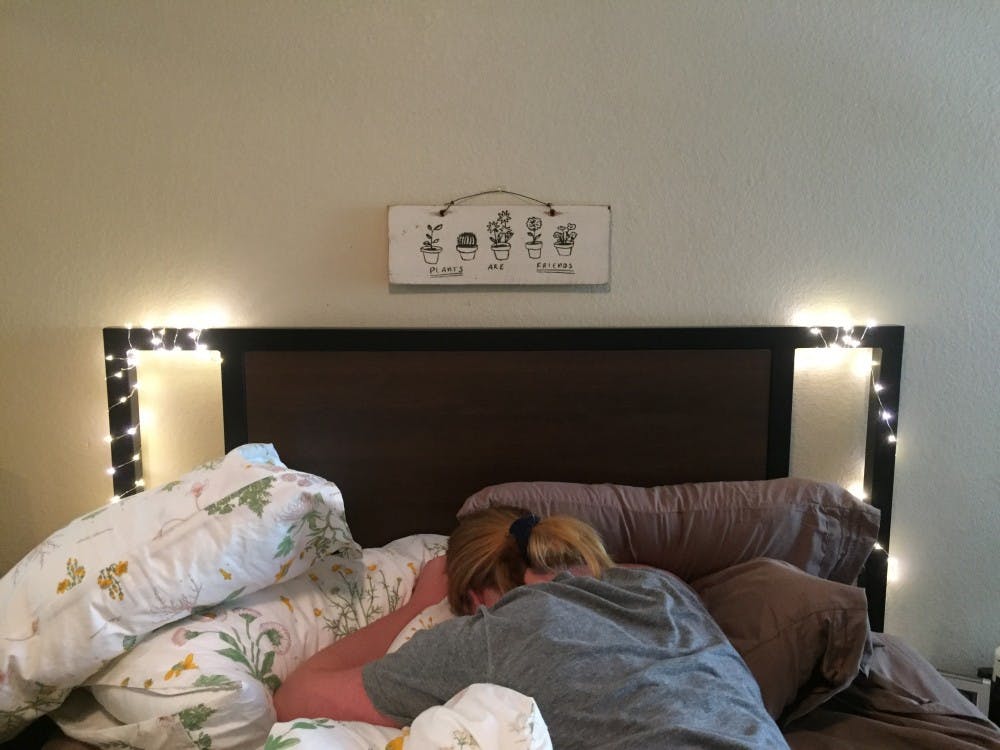As college students, we all worry. We have a plethora of tests and assignments in addition to an overwhelming number of new adult responsibilities.
As expected, it all becomes a bit too much sometimes. However, the overgeneralization of anxiety disorders in college not only trivializes a real psychological issue, but it also adds to the burden of being a millennial student. This is not to say that anxiety is not a real problem among those in our generation, but to perceive anxiety disorders as a right of passage in college sends the wrong message.
Anxiety disorders are one of the largest psychological issues present in the human population, which is to be expected considering the various forms of anxiety disorders. They can range from periodic panic attacks, to one of the most common: Generalized Anxiety Disorder, or GAD, which is characterized by a constant state of worry. The number of individuals diagnosed with an anxiety disorder has risen steadily since World War II, with over 40 million people being affected in the U.S. alone.
Being such a prevalent problem, health officials have become wary of misdiagnosing people. In fact, from 1998 to 2008 in the UK, diagnoses for anxiety disorders fell while symptoms for anxiety disorder in the population rose. Some influential journalists such as Robert Whitaker, author of Anatomy of an Epidemic, are skeptical about treating anxiety disorders with medication because medicating them can actually hinder personal growth in long term.
Some have gone as far as to call anxiety an epidemic among the college population. Perhaps this is due to a new exploration or acceptance of these disorders or perhaps this is due to a feeling of helplessness bred by new social and cultural pressures. Over the last few years, medical professionals as well as journalists have addressed the issue, claiming that the over-diagnosis of anxiety disorders lends itself to “pathologizing the normal.”
There is no denying that the number of individuals with anxiety disorders has risen, but this rise, especially for students in college, could be misconstrued as an indicator that anxiety disorders are inevitable in certain environments. Many college students bond with fellow students by complaining about work load, which often leads to confiding in one another about anxiety. Unfortunately, students have begun to go as far as to trivialize panic disorders and diagnose themselves with nonexistent conditions, which is insensitive to those individuals who actually possess such a disorder.
“With every mental illness, there are certain aspects of it that everybody can experience once in awhile, but it’s really only if you have it chronically, every day or more than 4 or 5 times a week that I would consider it to be an actual diagnosis. I think many people have anxiety about certain things, but not as many people have anxiety in general,” Nicole Erjavic, an ASU senior living with an anxiety disorder, said.
Perhaps, coining the day-to-day stress experienced by young adults as an anxiety disorder has served as a means of unification for students, allowing them to feel as though they belong to some "community." However, blurring the line between the stress of being in college and pre-existing anxiety disorders only adds to the pressure of being a student, and anxiety becomes an expectation.
Unfortunately, panic attacks and anxiety disorders have become "the norm" in college. Yes, the rise in the number of diagnoses per year supports this concept, but being a student is not synonymous with having an anxiety disorder.
Reach the columnist at ghirneis@asu.edu or follow @ghirneise2 on Twitter.
Editor’s note: The opinions presented in this column are the author’s and do not imply any endorsement from The State Press or its editors.
Want to join the conversation? Send an email to opiniondesk.statepress@gmail.com. Keep letters under 300 words and be sure to include your university affiliation. Anonymity will not be granted.
Like The State Press on Facebook and follow @statepress on Twitter.




